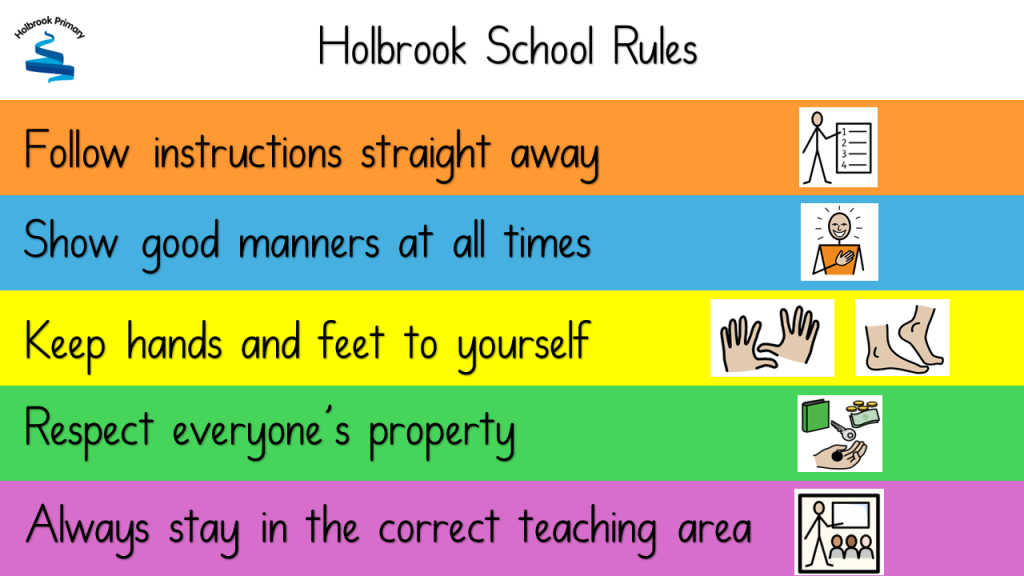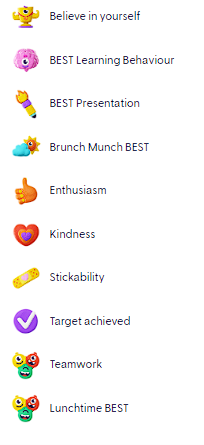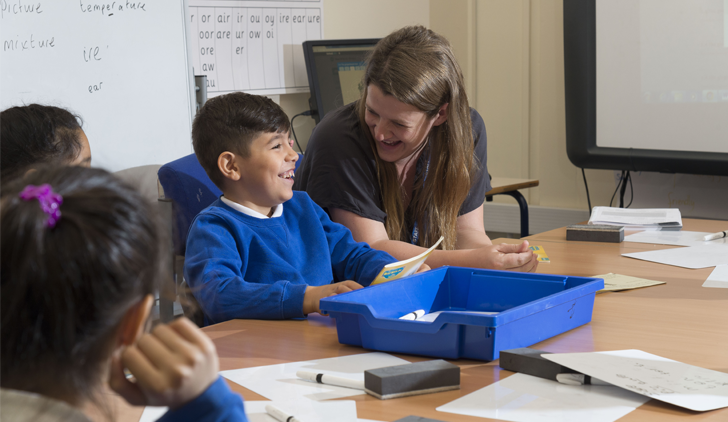Rationale
Our behaviour management policy is simple, consistent and creates an atmosphere where children and adults feel safe, valued and are able to learn. It is based on the shared vision of our school which are embodied in our behaviour expectations.
Principles
Outside providers are also made aware of our behaviour system and follow the principles and practice of this. This is so that all pupils have a consistent approach to the school’s behaviour management.
All members of the school community will be clear about the expected standard of pupils’ behaviour
Staff will model the behaviour they expect to see from children
The school vision- BEST will be displayed clearly in classrooms and around school. Staff and children will know this well and work to it’s philosophy.
School rules will be displayed clearly in classrooms. Staff and children will know them well and adhere to them.
Sanctions and rewards will be displayed clearly in each classroom and children will know them well.
All staff have a responsibility to make sure that sanctions and rewards are applied consistently and fairly.
All staff will follow the principles and practice of Assertive Discipline
Parents/Guardians can monitor their child’s achievements and behaviour in school via Class Dojo. (If Parents/Guardian cannot access please speak to your class teacher.)

Every day a pupil starts on a green card.
Should the school rules be broken, the following stages are followed:
Stage 1 – Warning
If a child is behaving in an inappropriate manner, the following procedure occurs:
• They are reminded of the school rules.
• The child is asked which school rule they have broken.
• The child is reminded how they should behave
• The pupil is given a warning.
Stage 2 – Orange
If the child continues to behave in an inappropriate manner and another school rule is broken, they are reminded of the school rules for the 2nd time, the procedure outlined in stage 1 is followed. The pupil is given their second warning. They change their card from green to orange. This will be recorded on MIS behaviour package by the class teacher or supporting adult in the classroom.
Stage 3 – Red
If another school rule is broken they are reminded of the school rules for the 3rd time, the procedure outlined in stage 1 is followed. The pupil changes their card from orange to red
- If a red card is given before playtime, 10 minutes of the start of playtime is missed, the child can then go out for the last 5 minutes’
- If a red card is issued after playtime, before lunch, 10 minutes of lunchtime is missed.
- If a red card is issued after lunch before home time, 10 minutes of the following playtime is missed the next day.
This will be recorded on the MIS behaviour package by the class teacher or supporting adult in the classroom.
Stage 4 – Red Plus
If another school rule is broken they are reminded of the school rules for the 4th time, the procedure outlined in stage 1 is followed. Their card remains red and they go to their partner class for 15 minutes “time out.”
| Nursery | Reception |
| 1W | 2C |
| 1DR | 2D |
| 1M | 2H |
| 3P | 4T |
| 3S | 4R |
| 4T | 4F |
| 5FC | 6G |
| 5J | 6R |
| 5H | 6E |
Parents should be informed that their child has reached this stage by speaking to the parent face to face or phone call by the class teacher, the teacher sanctioning, the Learning Mentor or the Deputy Head Teacher. This should then be recorded on MIS system.
Stage 5 – Red Plus Plus
If another school rule is broken, they are reminded of the school rules for the 5th time. The procedure outlined in stage 1 is followed.
Their card remains red and the pupil should go to the Deputy Head for appropriate “time out” minimum 15 minutes. This will be recorded on the MIS behaviour package by the class teacher or supporting adult in the classroom.
Parents will be informed that their child has reached this stage.
Stage 6 – Internal Exclusion.
If another school rule is broken, pupils go to the Deputy Head teacher who can escalate to the Head teacher if appropriate. The pupil should remain with the senior member of staff for what is deemed an appropriate amount of time dependent on the persistent disruptive behaviour and is classed as an internal exclusion. If appropriate, this may be extended to the following day or part of. This will be recorded on the MIS behaviour package and if the child is on the vulnerable list, the incident must also be recorded on C-POMs. Parents must be informed. Possible behaviour intervention may be implemented.
If a child persistently displays low level disruptive behaviour and is consistently receiving orange or red cards, parents should be made aware by either the class teacher, Learning Mentor or Deputy Head Teacher.
Rewards
The children are rewarded using a system called BEST.
- Children are awarded BEST points; any member of staff can give a BEST point at any point in the day via Class DOJO for the following:

- Children collect points via Class Dojo
- Once a BEST level has been achieved, children will be awarded a BEST badge and celebrated in BEST Assembly.
- Children are awarded badges when they reach the following number of points:
- 50 – Bronze
- 100 – Silver
- 150 – Gold
- 200 – Platinum
- Each BEST level should be recorded on the MIS system so parents can see this via the parent app.
- At the end of the half term those children who have achieved the highest scoring BEST level will visit the BEST Emporium to choose a reward and spend their points.
- The number of points gained will be part of the Headteacher’s half termly review to ensure that rewards are achievable and are taking place.
Recording
- Staff will record orange cards upwards on the Behaviour Log located in the MIS system.
- SLT with the learning mentors, will review the Behaviour Log weekly and where concerns arise, parents will be asked to visit the school and discuss ways of improving the behaviour of the pupil.
- The number of card changes will be part of the Headteacher’s half termly review to consider behaviour and movement towards independence from all pupils and therefore outstanding discipline across the school.
- All incidents of bullying, including online, prejudiced and/or discriminatory behaviour (including online) and sexual violence/sexual harassment (including online) are recorded in a separate incident log as well as on CPOMS – the school’s safeguarding platform. This log is reviewed weekly by SLT and learning mentors, and support is provided for both victims and perpetrators on a case-by-case basis.
An inclusive approach
In order to support all children, including those with SEND or who are otherwise vulnerable, staff will make reasonable adjustments to the approaches and procedures set out in this policy.
All staff will always consider whether the behaviour under review gives cause to suspect that a pupil is suffering from, or is likely to suffer, significant harm. Where this may be the case, staff follow our safeguarding policy.
We take a graduated response to pupils whose behaviour may be the result of educational, mental health or other needs or vulnerabilities. This response is individualised to meet the needs of the pupil and includes:
- an assessment to establish a clear analysis of the pupil’s needs
- a plan setting out how the pupil will be supported
- the required action to provide the support
- regular reviews to assess the effectiveness of the provision and identify any necessary changes
We consider a pupil’s special educational needs when responding to behaviour and the need for multi-agency assessments will be considered where necessary.
To find out more please read the School Behaviour Policy.






